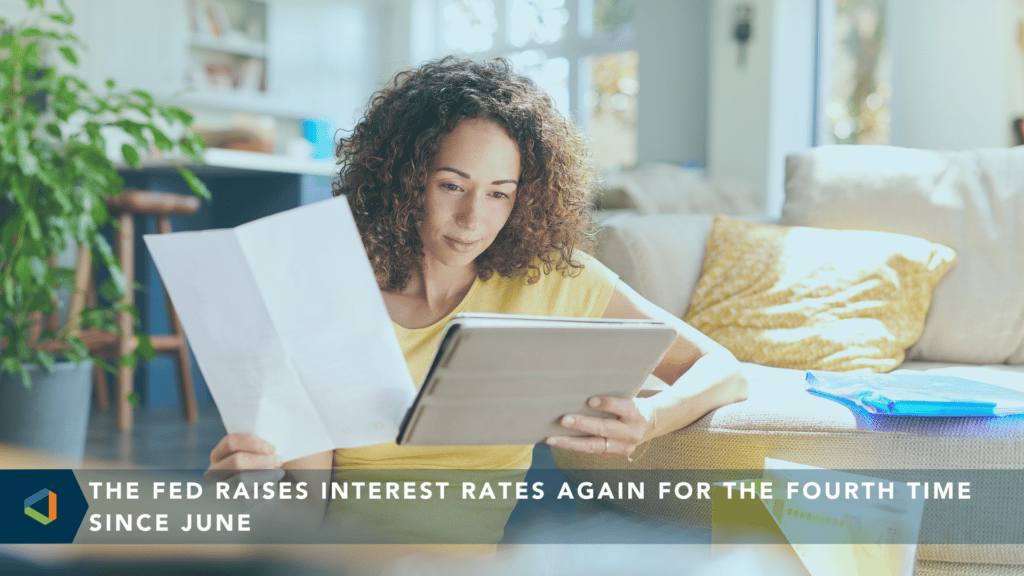Lower Costs
Markets In Focus: A Surprisingly Strong Economy and Financial Outlook
Markets In Focus: A Surprisingly Strong Economy and Financial Outlook
It’s been more than a year that we’ve been talking about a potential recession, yet the U.S. economy, markets, and consumer spending continue to show signs of strength. Investors may still hold their breath and expect the worst after some ups and downs, yet positive highlights and strong Fed actions give us reason to remain hopeful.
Let’s take a closer look at what happened in the second quarter and the outlook for the rest of the year, starting with three things to know right now:
- The U.S. economy is performing surprisingly well, thanks in part to a strong employment market and consumer spending, and in spite of lingering inflation and rising interest rates. (Jump to Economy section to read more)
- Global equity markets continued their recovery in the second quarter, after a dismal 2022. (Jump to Markets section to read more)
- After a tense few weeks, the looming threat of hitting the U.S. debt ceiling was averted, thanks to a deal to suspend the ceiling until January 2025. (Jump to Debt Ceiling section to read more)
Want to cut to the chase? Click here to jump to our outlook for the rest of the year.
Economic Growth is Exceeding Expectations
The U.S. economy has been surprisingly strong over the first half of 2023. Many economists believed that the economy would slow down or that we would even see a recession this year. One of the Fed’s mandates is to keep inflation under control, which means slowing the economy if it runs too hot. Instead, we’ve seen a resilient economy buoyed by a strong consumer. There is rather a chance of what’s known as a “growth recession”, which is something above zero but below growth potential. The U.S. has the potential to grow each year by about 1.8%, which is a combination of the long term growth rate of labor productivity (1.5%) and the long term growth rate of the labor force (0.3%).
The largest component of U.S. GDP is Consumption, which makes up about 68% of the U.S. economy (source: Bureau of Economic Analysis). Fortunately, consumer spending remained steady through the first half of the year and is helping keep the economy strong.
The most recent report for May showed that personal consumption expenditures have increased for each of the first five months this year, while retail sales reports show that spending at retail and food services locations has increased 1.6% year-over-year in May.
This is being fueled by rising incomes for Americans, which have also increased each month this year. While growth in spending has slowed, the fact that it has grown in the face of higher interest rates has helped keep the economy afloat.
Jobs
The other point of strength in the U.S. is the strong jobs market. So far this year, the U.S. has created nearly 1.6 million jobs (Source: BLS.gov), or an average of 314,000 per month. This pace is much faster than the year before the pandemic when only about 183,000 jobs were created per month.
The jobs market also remains tight as unemployment remained low in May at 3.7% (though slightly higher than the 50-year low of 3.4% in April). The huge number of open positions gives job seekers a large amount of power. The April Job Openings and Labor Turnover Survey (JOLTS), which is the most recent, showed that the number of available jobs jumped back above 10 million after three months of consecutive declines.
The pace of hiring is slowing but remains too swift for the Fed’s comfort. With labor demand still elevated, we expect the Fed to maintain its higher-for-longer posture through year-end.
Inflation and the Fed
Unfortunately, the strong consumer spending and tight labor market have led to “supercore” inflation, which affects the prices of services. Like before, high inflation remains top-of-mind for investors, consumers, and the Fed. The Core Personal Consumption Expenditures (PCE) Price Index, which excludes the effects of food and energy price changes, increased 4.6% in May versus the year prior, well above the Fed’s target of 2%. The Fed will need to keep policy rates higher for longer to sustainably rein in inflation.
However, the declines in the inflation rate gave the Fed enough of a reason to pause rate hikes at their June meeting. This came after 10 consecutive rate increases that caused the Fed Funds Rate to increase from 0% to 5.1% since March 2022. The pause in hikes allows the Fed to take some time to monitor the effects of the hikes so far.
While announcing the pause, they also made additional projections that seem to indicate increased optimism that they will be able to avoid a recession in their battle with inflation:
- The expectation of two additional 0.25% rate increases yet this year.
- An increase to the median estimate for real GDP growth in 2023, up from 0.4% to 1%
- A decrease to the estimate for the unemployment rate, from 4.5% to 4.1%.
However, the Fed also increased its estimate of core PCE from 3.6% to 3.9%, which is one of the reasons why it estimates the need for two more rate hikes.
Market in Review
The global equity markets continued their recovery in the second quarter, after a dismal 2022.
- Broad U.S. markets were positive with Standard & Poor’s 500 up 8.7% in Q2, adding to the positive performance from the first quarter and bringing the year-to-date figure to 16.9%.
- Large Cap Growth led the way with the Russell 1000 Growth index up 12.8% QTD and 29% YTD, while Large Cap Value trailed dramatically with the Russell 1000 Value index up only 4% QTD and 5.1% YTD through June 30th.
- Some participants believe in secular bull market by the definition of a 20% reversal in the Growth / Value ratio, which started in Sep 2020 and ended in December 2022.
While the most Growth-oriented sectors saw healthy gains, all cyclical and defensive Value sectors either had losses or were flat.
- Not surprisingly, the best-performing sectors so far this year continue to be the growth-heavy sectors like Technology (+40.37% YTD) and Communication Services (+36.3% YTD).
- The Financial sector recovered most of its first quarter losses following the banking sector turmoil and is now only down about 0.6% YTD.
- The worst two sectors were Utilities (-5.7% YTD) and Energy (-5.5% YTD).
The S&P 500 surged 16.9% in the first half of the year, and the all-powerful NASDAQ 100 roared ahead by over twice that percentage (39.4%).
Now the question is, where do we go from here?
Will the S&P 500 surpass the current 5-year high of 4,796 from early January 2022, remain flat, or perhaps even slip a little?
According to a recent Reuters poll, many strategists expect the index to slip marginally. Estimates from Goldman Sachs, NDR, and other houses estimate the year-end S&P to be around 4,500 by the year-end, which indicates a flat to slightly positive six months ahead of us. As long as the current conditions persist, the path of least resistance seems to be higher. However, the market could be forced to balance between not sliding into recession and not triggering inflation on the tip of more rate hikes.
Additionally, core fixed income struggled in the second quarter, with the Bloomberg U.S. Aggregate Bond index decreasing by 0.8%. Interest rates increased across the yield curve, with two-year Treasuries up 0.87% and the 10-year increasing 0.37%. However, the index remains positive at 2.1% year-to-date as it continues to recover from the losses in 2022.
What About the Debt Ceiling?
Coming into the second quarter, the looming debt ceiling was one of the biggest threats facing the U.S. government. Without action by Congress, Treasury Secretary Janet Yellen predicted the U.S. would reach its debt limit around the second week of June and the government wouldn’t be able to continue to pay all of its debts.
Even with precedents set for the debt ceiling to be extended or suspended in the past (most recently 2011 and 2013), there was still fear that an agreement wouldn’t be reached. The implications could have been dire, including missed payments to Social Security recipients and the military, default on U.S. Treasury bonds, and even impacts on the U.S. ability to borrow money in the future.
Fortunately, a deal was made to suspend the debt ceiling until January 2025. The bill also:
- Caps government spending programs for 2024 and 2025
- Prevents President Biden from further extending the freeze on student loan repayments, and
- Fast-tracks the completion of the Mountain Valley Pipeline project in West Virginia and Virginia.
The White House estimates the bill will result in about $1 trillion in savings over the next 10 years.
Although investors have largely shifted their attention to other uncertainties like Fed policy and inflation, some economists think differently. They believe the debt-ceiling deal’s small spending cut in 2024 and cap in 2025 may provide only temporary relief in regard to the U.S. deficit. It could have a marginal impact on the longer-term trajectory of the U.S. debt-to-GDP (gross domestic product) ratio, which indicates a country’s ability to pay back debts. The ratio is expected to grow from 97% in 2022 to more than 115% by 2033. Therefore, the question of U.S. fiscal sustainability still remains open.
Outlook: Cautiously Optimistic
So far, 2023 has been good for those who are bullish on financial markets and for an economy still in recovery mode. However, investors should be aware of some areas of uncertainty that remain.
The potential for continued pressure on the banking sector still exists.
- Three of the four largest bank failures in U.S. history have happened this year. Other banks may face similar challenges as the sector adapts to the new, higher interest rates.
- Increased pressure on the system is causing more banks to tighten lending standards. The net percentage of banks that are tightening lending standards for commercial and industrial loans has increased from 0% in Q2 2022 to 46% in Q2 2023.
- This can have a further chilling effect on the economy beyond the Fed rate hikes.
Geopolitical conflicts are causing continued uncertainty around the globe.
- The conflict in Ukraine continues even as Russia has seen some mutiny from the military groups they’ve hired to fight on their behalf, and China continues to show support for Russia. A further turn in either direction could affect markets and the global economy.
Stocks should breathe a sigh of relief
- The cloud of inflation appears to have passed through the sky of S&P 500 earnings. Margin pressures that emerged in 2022 are fading and should offset any revenue weakness that emerges as a result of economic pressures, resulting in an expected ex-energy S&P 500 recovery by 2024.
Finally, the Fed is still at risk of overshooting its terminal interest rate and slowing the economy too much.
- June’s pause in interest rate hikes in June should allow time to get a better sense of the effect of their actions so far, but the prospect of two additional hikes could prove too much for the economy to bear.
- The treasury yield curve inversion (2-year yield exceeding 10-year) approached an extreme level as the market priced in further Fed policy tightening.
- The treasury yield curve could steepen sharply in the second half of the year as the Fed ends rate hikes. Near-term risks remain toward further flattening until it’s clear the Fed is done raising interest rates.
- However, steepening may accelerate if the market prices for deep rate cuts by the end of 2024, which is eventually a possibility if supply catches up with demand in a “growth recession” scenario.
Even with these risks, the best thing investors can do is stay focused on long-term financial plans. It’s important to not make rash investment decisions based on short-term headlines. When in doubt, talk to a financial professional to make sure your goals and risk tolerance are in line with your investment strategy.





